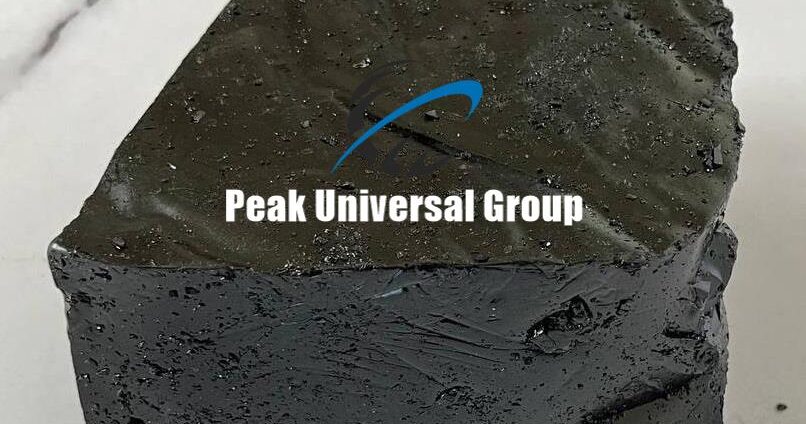
How Oxidized Bitumen 115/15 is Produced | Manufacturing Process Explained
How Oxidized Bitumen 115/15 is Produced? Oxidized bitumen, also known as blown asphalt, is a versatile material widely used in various industrial applications. One of the specific grades of oxidized bitumen is 115/15, which is characterized by its softening point of 115°C and a penetration value of 15 dmm.
In this comprehensive blog, we will delve into the production process, applications, uses, benefits, disadvantages and price factors of oxidized bitumen 115/15, with Peak Universal Business as its supplier.
What is Oxidized Bitumen 115/15?
Oxidized bitumen 115/15 is a grade of bitumen that has undergone a controlled oxidation process to enhance its physical properties. The numbers 115/15 refer to the softening point (115°C) and the penetration value (15 dmm). This specific grade is known for its high softening point and low penetration, making it suitable for applications requiring durability and heat resistance.
The Air Blowing Process
Oxidized Bitumen 115/15 is created by injecting air into hot penetration-grade bitumen inside a controlled reactor. Here’s a breakdown of the steps:
🔬 Step-by-Step Production Process
-
Raw Material Selection
Use high-quality vacuum bottom or straight-run bitumen as the base material. -
Heating Stage
Bitumen is heated to 230–270°C in a reactor equipped with an agitation system. -
Air Injection (Oxidation)
Dry air is blown through the molten bitumen. The oxygen causes polymerization, increasing the softening point and decreasing penetration. -
Controlled Reaction Time
The blowing continues for several hours, carefully monitoring temperature, air volume, and reaction pressure. -
Cooling & Storage
Once desired specs are achieved, the product is cooled and stored in block, slab, or drum form for shipping.
Production Process of Oxidized Bitumen 115/15
How Oxidized Bitumen 115/15 is Produced? The production of oxidized bitumen 115/15 involves a process called air blowing or oxidation. Here is a detailed step-by-step description of the production process: Selection of Base Bitumen, Heating, Air Blowing, Oxidation Reaction, Cooling, Quality Control
1. Selection of Base Bitumen
The process begins with the selection of a suitable base bitumen. The quality and characteristics of the base bitumen are crucial as they directly affect the properties of the final oxidized bitumen product.
2. Heating
The selected base bitumen is heated in a large reactor or blowing column to a temperature between 240°C and 300°C. This high temperature is necessary to make the bitumen fluid enough for the oxidation process.
3. Air Blowing
Once the base bitumen reaches the desired temperature, air is blown through the bitumen. This is done by introducing air at the bottom of the reactor and allowing it to bubble through the heated bitumen. The oxygen in the air reacts with the bitumen, causing a chemical reaction that changes its properties.
4. Oxidation Reaction
During the air blowing process, the bitumen undergoes an oxidation reaction. The oxygen molecules react with the hydrocarbons in the bitumen, leading to the formation of complex oxygenated compounds. This reaction increases the softening point and decreases the penetration value of the bitumen.
5. Cooling
After the desired level of oxidation is achieved, the oxidized bitumen is cooled to solidify it. This can be done using air- or water-cooling systems. The cooled product is then collected for further processing or packaging.
6. Quality Control
The final Oxidized bitumen 115/15 is subjected to rigorous quality control tests to ensure it meets the required specifications. These tests include checking the softening point, penetration value, ductility, and other physical and chemical properties.
Properties of Oxidized Bitumen 115/15
| Property | Typical Value |
|---|---|
| Softening Point (°C) | 115 ± 5 |
| Penetration (0.1 mm) | 10–15 |
| Flash Point (°C) | >250 |
| Solubility in TCE (%) | >99 |
| Ductility (cm @25°C) | <1 |
| Appearance | Black, brittle solid |
These properties make it stable in extreme temperatures and resistant to aging and moisture.
🏗️ Why Choose Oxidized Bitumen 115/15?
🔥 High Softening Point
It performs well in high-temperature environments without deformation.
💧 Excellent Water Resistance
Ideal for damp-proofing, tank lining, and membrane waterproofing.
🧱 Structural Strength
Provides rigidity for flooring, bridge joints, and industrial roofing.
Applications and Uses of Oxidized Bitumen 115/15
🔹 Waterproofing and Damp-Proofing Applications
The material’s impermeable structure makes it perfect for:
-
Roof and foundation waterproofing membranes
-
Tunnel linings and bridge decks
-
Water tanks and reservoirs
Its low ductility ensures it remains stable in both hot and cold conditions without cracking or melting.
⚡ Electrical Insulation Applications
Due to its dielectric properties and resistance to oxidation, Bitumen 115/15 is used in:
-
Cable sheathing and electrical insulation coatings
-
Transformer sealing
-
Protective coatings for electrical ducts
These applications require high-performance bitumen that withstands heat without conductivity or chemical breakdown.
🏭 Industrial & Mechanical Use Cases
🛢️ Anti-Corrosion Coatings
Oxidized Bitumen 115/15 is ideal for pipe wrapping, steel structure coating, and anti-corrosive barriers in marine and chemical industries.
🧱 Floor and Expansion Joint Fillers
Its rigidity supports the creation of durable flooring mastics and bridge joint sealants.
🧱 Construction and Civil Engineering
This grade is extensively used in:
-
Bituminous roofing felts
-
Prefabricated building insulation sheets
-
Underground structure waterproofing
-
Precast concrete panel bonding
Its high softening point makes it particularly valuable in hot climate zones.
Technical Overview Table
| Industry | Application | Function |
|---|---|---|
| Waterproofing | Membranes, tank linings, roofs | Moisture barrier |
| Electrical | Cable coating, transformer sealing | Insulation, dielectric properties |
| Industrial | Anti-corrosive pipe coatings, steel protection | Chemical resistance, longevity |
| Civil Construction | Joint fillers, insulation panels, roofing felts | Durability, thermal resistance |
Benefits of Oxidized Bitumen 115/15
The use of oxidized bitumen 115/15 offers several benefits, making it a preferred material in various industries:
1. High Softening Point
The high softening point of oxidized bitumen 115/15 ensures it remains stable and does not deform under high temperatures. This property is particularly important in applications exposed to extreme heat, such as roofing and road construction.
2. Low Penetration Value
The low penetration value of oxidized bitumen 115/15 indicates its hardness and resistance to deformation. This makes it suitable for applications requiring durable and long-lasting materials.
3. Water Resistance
Oxidized bitumen 115/15 provides excellent water resistance, making it an ideal choice for waterproofing applications. It prevents water infiltration and protects structures from moisture-related damage.
4. Adhesive Properties
The strong adhesive properties of oxidized bitumen 115/15 make it effective in bonding and sealing applications. It provides a secure and durable bond between surfaces, ensuring structural integrity.
5. Chemical Stability
Oxidized bitumen 115/15 is chemically stable and resistant to various chemicals, including acids and alkalis. This property makes it suitable for use in harsh industrial environments.
Disadvantages of Oxidized Bitumen 115/15
While oxidized bitumen 115/15 offers numerous benefits, it also has some disadvantages:
1. Brittleness at Low Temperatures
Oxidized bitumen 115/15 can become brittle at low temperatures, leading to cracking and reduced flexibility. This can be a limitation in applications exposed to freezing conditions.
2. Environmental Concerns
The production and use of oxidized bitumen 115/15 can have environmental impacts. The oxidation process releases emissions, and the disposal of bitumen products can pose environmental challenges.
3. Cost
The cost of oxidized bitumen 115/15 can be higher compared to other types of bitumen due to the additional processing required. This can be a consideration for budget-sensitive projects.
Price Factors of Oxidized Bitumen 115/15
The price of Oxidized bitumen 115/15 is influenced by several factors:
1. Crude Oil Prices
The price of crude oil directly affects the cost of bitumen products, including oxidized bitumen 115/15. Fluctuations in crude oil prices can lead to corresponding changes in bitumen prices.
2. Production Costs
The costs associated with the oxidation process, including energy consumption and equipment maintenance, influence the price of oxidized bitumen 115/15. Efficient production methods can help reduce these costs.
3. Market Demand
The demand for oxidized bitumen 115/15 in various industries impacts its price. High demand can lead to increased prices, while lower demand can result in more competitive pricing.
4. Quality and Specifications
The quality and specifications of oxidized bitumen 115/15, including its softening point and penetration value, affect its price. Higher quality products meeting stringent specifications tend to be priced higher.
5. Supplier and Region
The supplier and geographical region can influence the price of oxidized bitumen 115/15. Proximity to production facilities and established supply chains can help lower transportation and distribution costs.
Peak Universal Business : As a Oxidized Bitumen 115/15 Supplier
Peak Universal Business is a leading supplier of high-quality oxidized bitumen 115/15. With a commitment to excellence and customer satisfaction, Peak Universal Business ensures the provision of premium oxidized bitumen products. Key advantages of sourcing oxidized bitumen 115/15 from Peak Universal Business include:
Quality Assurance: Stringent quality control measures ensure the delivery of high-purity oxidized bitumen 115/15, meeting industry standards.
Reliable Supply Chain: A robust supply chain guarantees timely delivery and consistent availability of products.
Competitive Pricing: Peak Universal Business offers competitive pricing, ensuring cost-effectiveness for customers.
Technical Support: Expert technical support and guidance help customers optimize their processes and applications.
FAQ – Oxidized Bitumen 115/15
❓ What is the difference between 115/15 and other grades?
Bitumen 115/15 has a higher softening point, making it suitable for hot climates and industrial use.
❓ How is 115/15 stored and transported?
It is typically packed in 25 kg bags, drums, or meltable PE blocks, then stored in dry conditions.
❓ Can it be modified with polymers?
Yes, it can be combined with SBS or APP polymers for enhanced flexibility and performance.
❓ Is it eco-friendly?
When used properly, it provides long service life, reducing maintenance needs and environmental impact.
❓ Is Oxidized Bitumen 115/15 suitable for extreme temperatures?
Yes, with a softening point over 115°C, it performs reliably in both hot and cold environments.
❓ Can it be used in potable water systems?
No, it’s not recommended for potable water applications. It’s designed for industrial and infrastructure use.
❓ How does it compare to 90/10 in construction use?
115/15 is harder and more heat-resistant, making it better suited for high-load and high-temp applications.
Conclusion – How Oxidized Bitumen 115/15 is Produced
Oxidized bitumen 115/15 is a versatile material with a wide range of applications across various industries. Its high softening point, low penetration value, and excellent water resistance make it a preferred choice for roofing, pipe coating, electrical insulation, carpet backing, adhesives, and waterproofing. While it offers numerous benefits such as durability, chemical stability, and strong adhesive properties, it also has some disadvantages, including brittleness at low temperatures and environmental concerns.
Understanding the price factors and sourcing from reliable suppliers like Peak Universal Business can help industries make informed decisions and optimize their use of oxidized bitumen 115/15. With its commitment to quality and customer satisfaction, Peak Universal Business stands out as a trusted partner for high-quality oxidized bitumen products.
How Oxidized Bitumen 115/15 is Produced? Selection of Base Bitumen, Heating, Air Blowing, Oxidation Reaction, Cooling, Quality Control
You can Read More about Oxidized Bitumen Here:
Applications & Properties of Blown asphalt 85/40
The importance of Blown asphalt 90/10
What is Blown bitumen 75/25 and its Industrial Applications?
📣Call to Peak Universal Business
🔍 Looking for premium-grade Oxidized Bitumen 115/15?
We in Peak Universal Business supply high-quality Oxidized Bitumen 115/15, with custom packaging, competitive prices, and global delivery.
👉 Request a Quote Today
🔹 Request a Quote | 🔹 Download TDS | 🔹 Talk to a Bitumen Specialist
📧 Email: [email protected]
📞 Phone: +971 4 878 2031
🌐 Visit: PUBLtd. Bitumens
📦 Minimum Order: 20 MT | Packaging: Kraft Bags / Drums / Bulk
If You have any other Query or Question you want to ask, Please don’t hesitate to Contact Us
- 0 comment
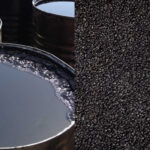
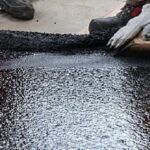
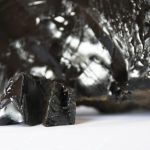
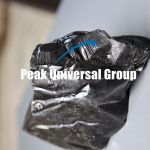

Leave a Reply